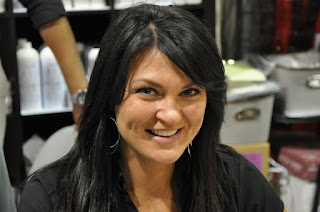Why do we support these nail salons?????....Why not support the many women, LIKE MYSELF, (I own my own business within a business) and yes men techs also, doing what they love to do each day, trying to support themselves and their families?
One of the reasons, I am told, by patrons who support these salons: they like how fast and cheap they are. But yet, I hear complaints about how their nails hurt after the service, burning sensations when using the Dremmel, bleeding cuticles, Credo blades (illegal), prying off acrylic nails for a new set, charging you for gel nails when they really aren't gel! It is all about fast, in and out and getting your hard earned dollars with little concern for your safety!!!!
Another reason that they are cheap, that most patrons don't know, is that they use cheap "illegal" products that can harm you and they do not spend the money on sanitation and disinfection products. Most of them haven't gone to school, take any type of continuing education classes, which are required or hold valid Cosmetology licences!
If you read this article....it gives you just a couple of additional reasons why they are so cheap! The government spends mega bucks (tax payers dollars) for grants and assembling task forces, trying to shut them down, but you keep going to them. Come on Ladies you are hurting your own gender, your own health, and wasting your tax dollars...wake up! Support your local small businesses!!!!!
I am not criticizing all salons, but there are quite a few.
Article link below.
http://www.huffingtonpost.com/phillip-martin/nail-salons-and-human-tra_b_669076.html
One of the reasons, I am told, by patrons who support these salons: they like how fast and cheap they are. But yet, I hear complaints about how their nails hurt after the service, burning sensations when using the Dremmel, bleeding cuticles, Credo blades (illegal), prying off acrylic nails for a new set, charging you for gel nails when they really aren't gel! It is all about fast, in and out and getting your hard earned dollars with little concern for your safety!!!!
Another reason that they are cheap, that most patrons don't know, is that they use cheap "illegal" products that can harm you and they do not spend the money on sanitation and disinfection products. Most of them haven't gone to school, take any type of continuing education classes, which are required or hold valid Cosmetology licences!
If you read this article....it gives you just a couple of additional reasons why they are so cheap! The government spends mega bucks (tax payers dollars) for grants and assembling task forces, trying to shut them down, but you keep going to them. Come on Ladies you are hurting your own gender, your own health, and wasting your tax dollars...wake up! Support your local small businesses!!!!!
I am not criticizing all salons, but there are quite a few.
Article link below.
http://www.huffingtonpost.com/phillip-martin/nail-salons-and-human-tra_b_669076.html





















































































































